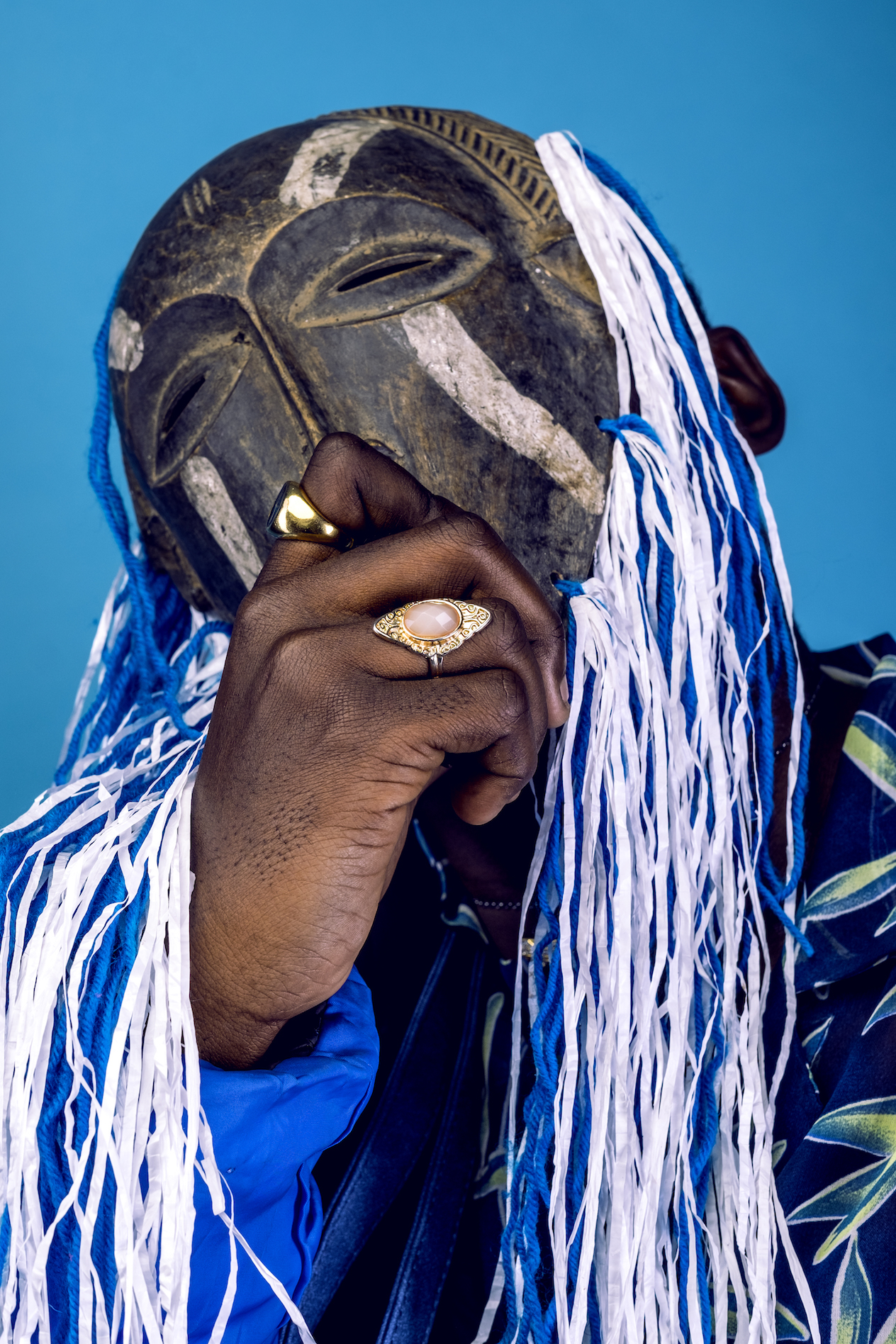A non-isolated effort to reconcile the continent’s past, contemporary, and future narratives, we hope that this project helps raise awareness of the figures included, but that it also prompts young people to further explore existing narratives and create new ones of/for the African continent and its people.
– Kabumba on the creation of their project, ‘AKANTUNSE’
Kabumba is a Zambian creative multimedia and curatorial platform with a focus on Pro-African narratives. Their latest offering, AKANTUNSE, meaning ‘a thing that was, is, and forever will be’ in Bemba, is a mixed media project which includes a photographic series, a podcast, a music score as well as an event. The project reiterates and celebrates a variety of figures from African mythology, folklore and storytelling – giving agency to African imagination. AKUNTUNSE is self-described by Kabumba as “a compilation of urban, antiquity, contemporary, and afro-futuristic aesthetics.”
The three-part project takes its influence from folklore that spans West-, North-East, Central-, Southern Africa as well as the Caribbean. They explain the motivation for their project by stating, “By drawing inspiration from African folklore and mythology, Kabumba attempts to preserve cultural assets by reconciling the ‘old’ with the ‘new’, and creating a new and relatable sort of urban legend. Kabumba would also like to demonstrate through the politics of this project a background (of expansive imaginations and storytelling within the African context) that exemplifies the historic as well as contemporary prowess, relevance, and validity of African creative thinking, expression, and transaction.”
Kabumba set out to profile each figure on their list which included Yumboes, Yemaya, Nyami Nyami, Obayifo, Dzivaguru, Nyau, Makeda and Anansi. Below is a brief description of some of these figures:

Yemaya (Yemoja in Yoruba)
Orisha of the living ocean, Yemaya is the mother of all living beings and is often symbolised as a mermaid or moon goddess. The figure of Yemaya is connected to the Yoruba of South West Nigeria. Yemaya is believed to have fallen heavily pregnant resulting in the birth of fourteen gods and goddesses, the rivers and humankind.
Yemaya is seen as the protector of womanhood, the guardian of childbirth, she has healing abilities and the keeper of sacred mysteries. Yemaya in the Yoruba language translates to “mother with children who are like fish”. The leader of water deities, Yemaya, is often shown in folklore in blue and wearing shells as adornment. Her figure and strength are regularly celebrated at Caribbean- or South American carnivals.

Yumboes
Yumboes are a species of fairies that originate from the mythology of the Wolof-Lebou people on Goree Island in Senegal. If myth is to be believed, they are regarded as having been helpful and welcoming often times inviting humans to their elaborate feasts.
Silver hair. Shiny skin. No more than 60cm tall. The Yumboes had half invisible servants with only hands or feet ever seen. The feasts of the Yumboes revolved around stolen delicacies from the human world and upon departure, human guests had their memories of the encounter wiped clean.
Yumboe meaning “good people” were believed to assist rather mysteriously, would-be slaves escape their captors and find their way back home. The significance here lies in the fact that Goree island is where the terrible House of Slaves was located (with a door of no return). This was a final point of departure for slaves from Africa during the transatlantic slave trade.

Obayifo
From the folklore of the Ashanti of Ghana rises the mythological creature, Obayifo – a vampire-like being/sorceress. Regarded as a dominant figure amongst communities, Obayifo was believed to inhabit the bodies of civilians. These creatures were thought to have shifty eyes, love food and emit a phosphorescent light when travelling at night. Obayifo it is said, relished in the destruction of cocoa crops.
Some believe that Obayifo sometimes used their powers to sustain the lives of others but their ability for compassion is often questioned. The most likely suspects of Obayifo were that of assertive, dominant, ambitious and unmarried young women. It is speculated that the legend of Obayifo was created as a means of stifling young women who posed some sort of threat to the system of dominance. The penalty for being found such a vampire-like creature was death.

Nyau
A medium of both life and death, he forms a part of a secret brotherhood within Chewa society. Such men are seen at key ceremonies performing ritualistically. The Chewa believe that life exists in an interlinked way, within ancestors, the unborn as well as the living. It is indicated that women enact a pivotal part within the secret society of Vi Nyau. As important members of this esoteric society, they go through their own rites of initiation. Members of this sacred society are known to commune with the dead called the (Great Prayer).

Dzivaguru
The tale of Dzivaguru is an explanation of natural phenomena such as day and night, rain and drought. A ruler of the heavens and of earth she is said to have lived in a palace by a lake near Dande in Zimbabwe. She is cast as wearing goatskins, flowers and having a cornucopia with magical potions. She was loved by her people for her kindness – saving the land from drought with rain, providing sun for warmth and granting nightfall so that people can rest.

Nyami Nyami
A mer-spirit with shapeshifting abilities, Nyami Nyami is often depicted as a snake with a fish head. He was the god of the Zambezi Valley and the river before the construction of the Kariba Dam. Nyami Nyami is the primary god of the Tonga people of Southern Zambia and acted as a protector and provider of nourishment for his people. Separated from his wife due to the construction of the dam, Nyami Nyami left due to sorrow and vowed to only return if he could be reunited with his wife.
Have a listen to the podcast on Mixcloud here and on YouTube here.




















































